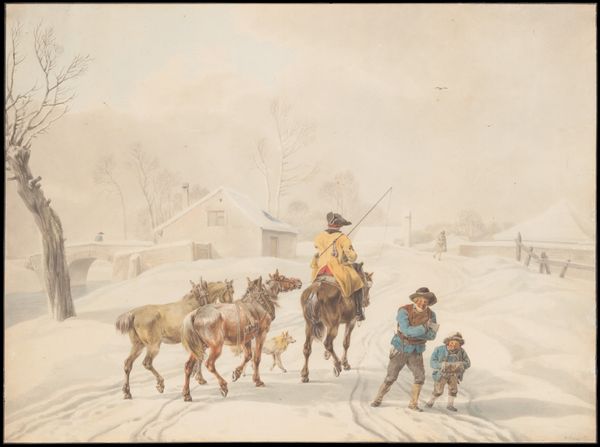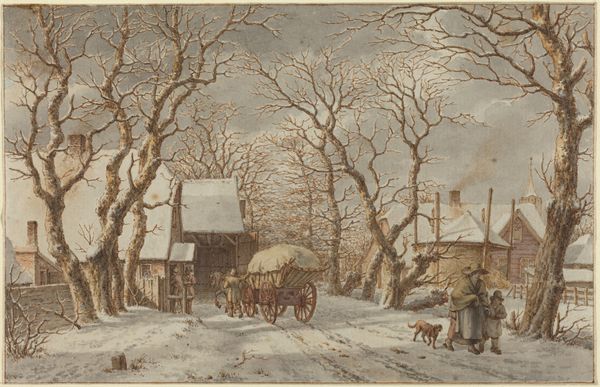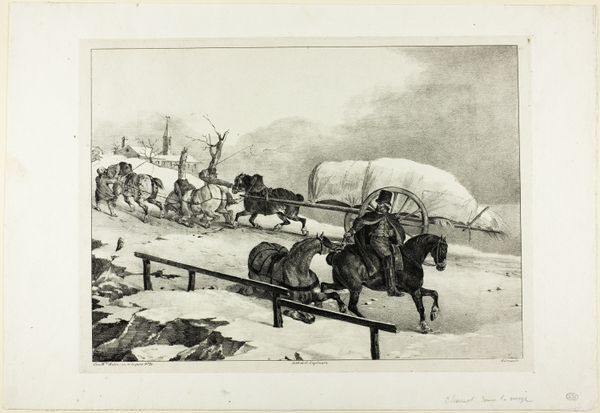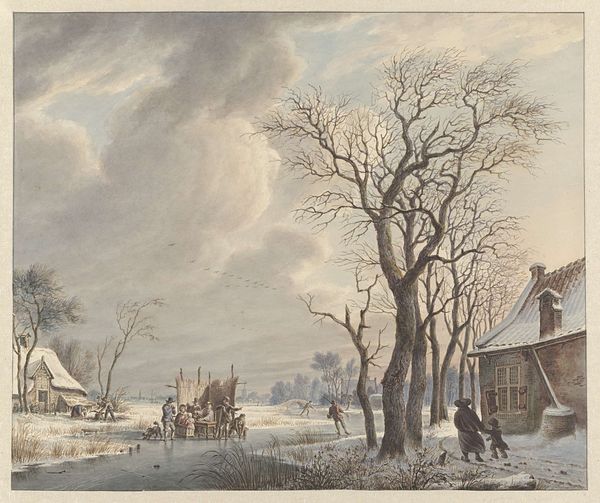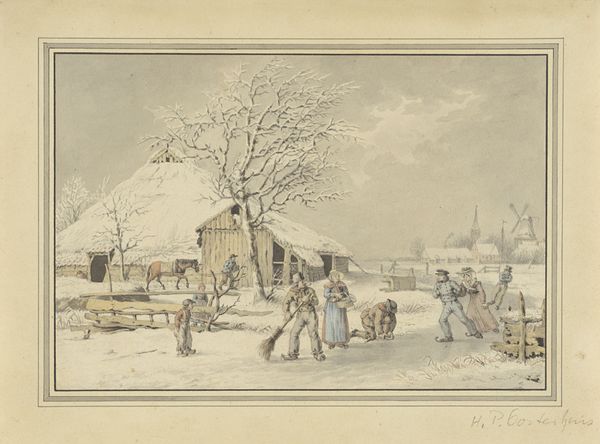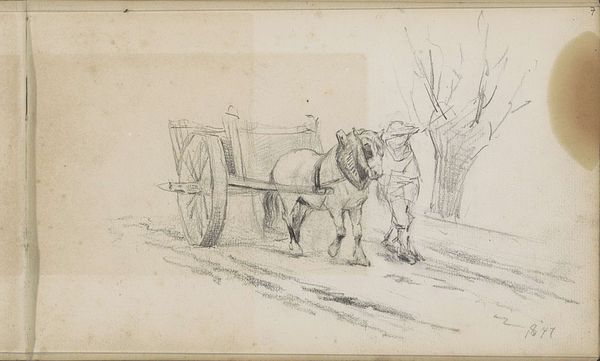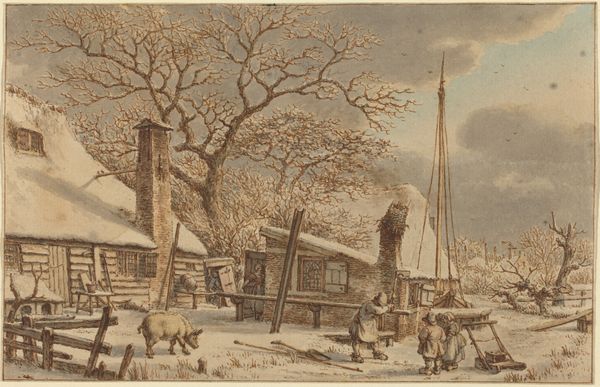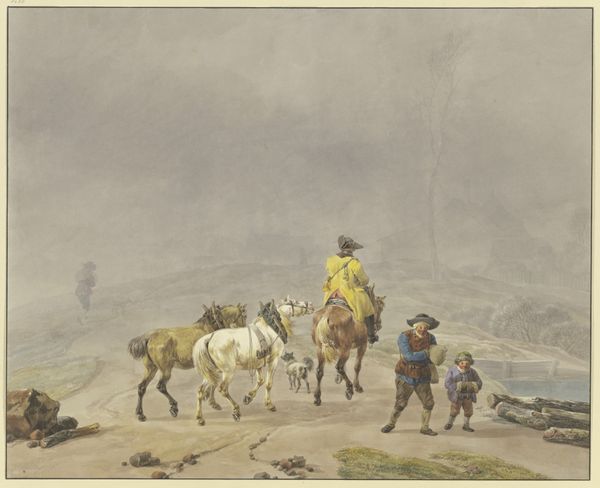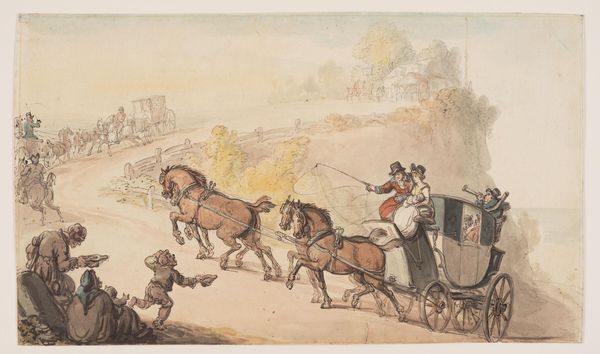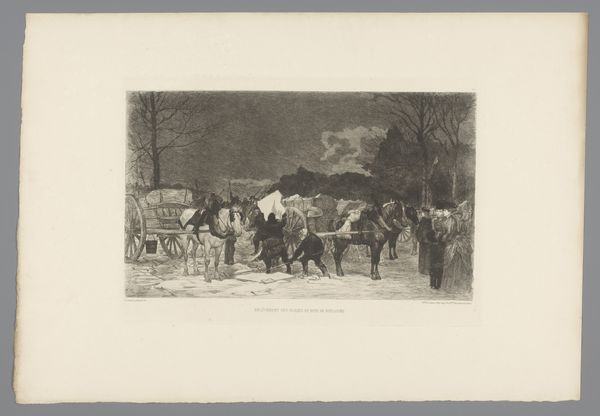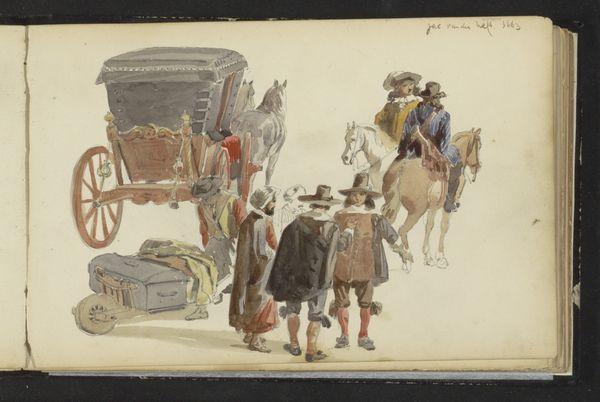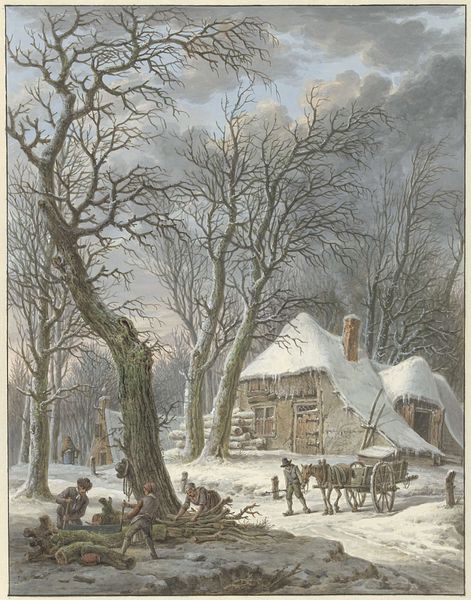
drawing, watercolor, ink, pencil
#
drawing
#
animal
#
landscape
#
watercolor
#
ink
#
coloured pencil
#
classicism
#
pencil
#
genre-painting
Copyright: Public Domain
Curator: Here we have Wilhelm von Kobell's "Stagecoach in Winter," created around 1798. It’s a beautiful example of genre painting rendered in watercolor, ink, and pencil, currently held in the Städel Museum collection. Editor: The immediate feeling is... chilly. You can practically feel the damp cold seeping through. I’m struck by the stark contrast between the vibrant yellow stagecoach and the muted winter landscape. Curator: Indeed. Von Kobell expertly captures the social hierarchy of the era. Note the elegant passengers inside the coach, shielded from the elements, in stark contrast to the laboring figure carrying firewood on their head in the deep snow. Editor: Absolutely. It’s a potent image of social stratification visualized through labor and access to transportation. I’m also intrigued by his choice of materials. Pencil underdrawing provides structure, while delicate washes of watercolor bring a subtle vibrancy, mimicking the ephemeral quality of light on snow. It shows off the means of production versus the romantic idea of landscape. Curator: It also showcases the cultural significance of travel during that period. The stagecoach wasn't merely a means of conveyance; it represented progress, connectivity, and, of course, status. These details about genre paintings demonstrate social norms to the present viewer. Editor: And I notice the small dog trotting along – a detail that softens the scene a little. It reminds me that even in harsh conditions, life continues on many different scales of society, all moving along different roads. The textured brushstrokes of the snow add depth, making the landscape feel tactile, despite being on paper. Curator: His mastery of depicting light and atmosphere really does set it apart. The way he renders the snow-laden rooftops and the overcast sky creates a believable and engaging winter scene. The subtle hues give a clear depiction of society and culture, using the transit methods of the era. Editor: Yes, the whole piece invites you to consider not only who is traveling, but also who is facilitating that travel, and under what conditions. It's a poignant snapshot of a specific moment in time, laid bare by both social pressures and by masterful, tangible materials. Curator: It's a great example of how art serves as a historical document. Each character and the setting can be studied through artistic talent, revealing volumes about the society and its structure at the time it was created. Editor: Precisely, a beautiful piece. You walk away with something more from examining material and labor practice.
Comments
No comments
Be the first to comment and join the conversation on the ultimate creative platform.
